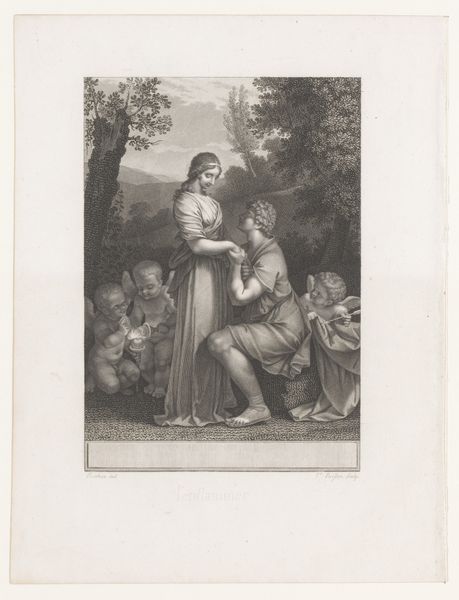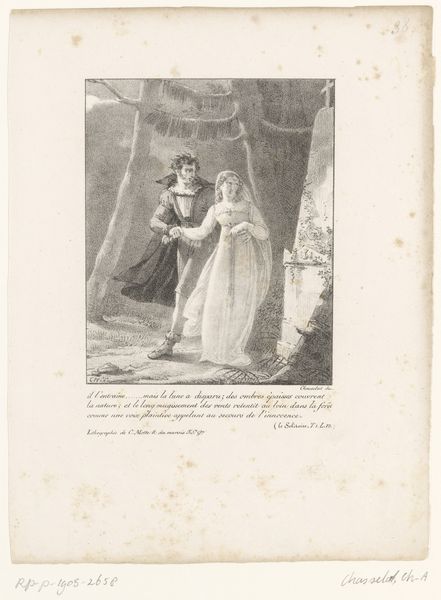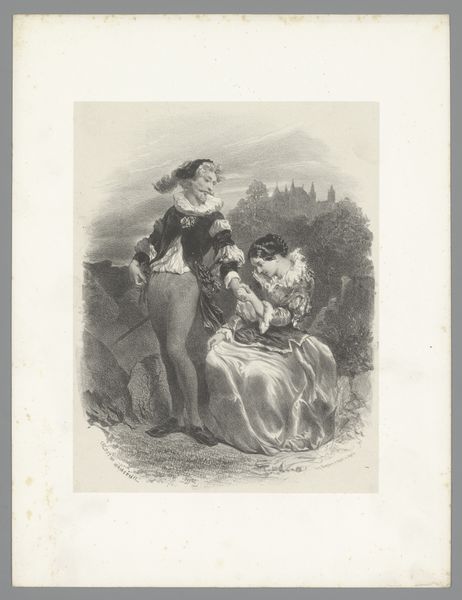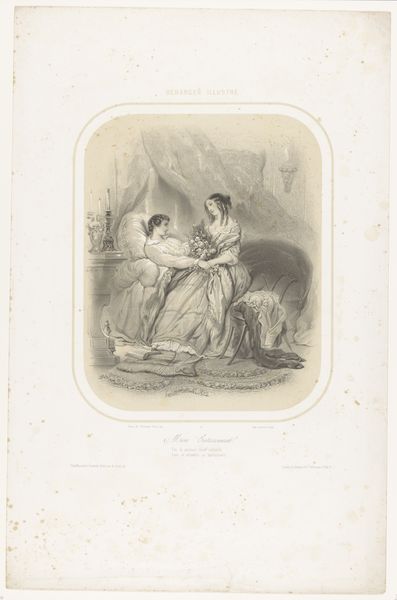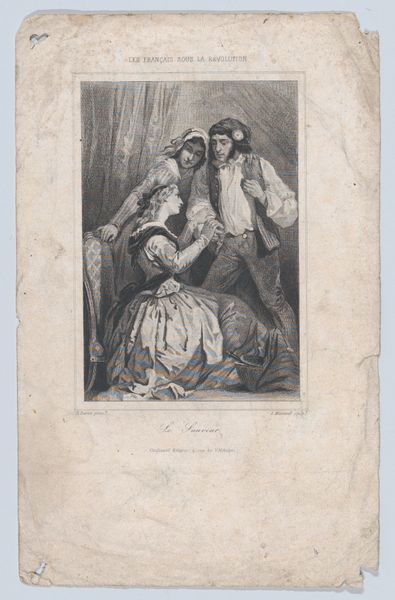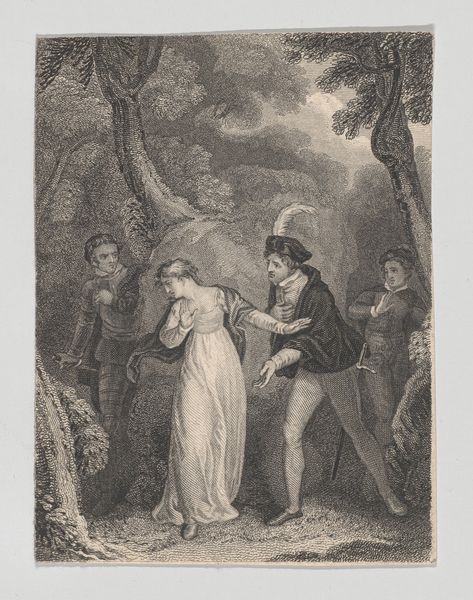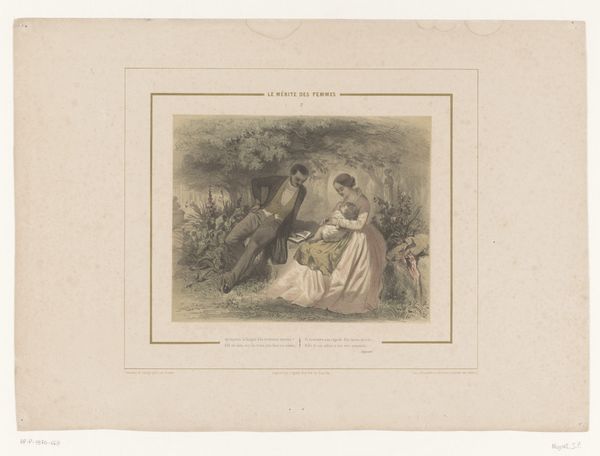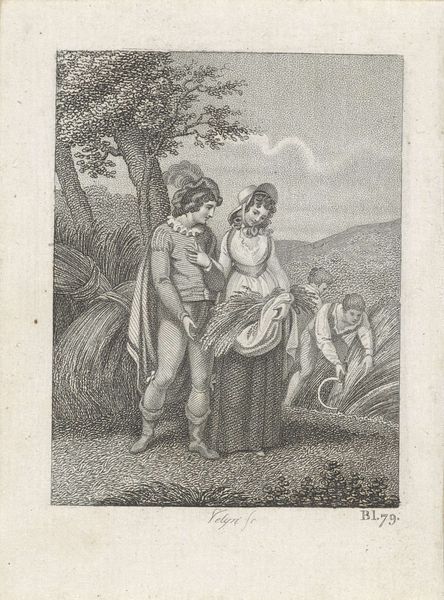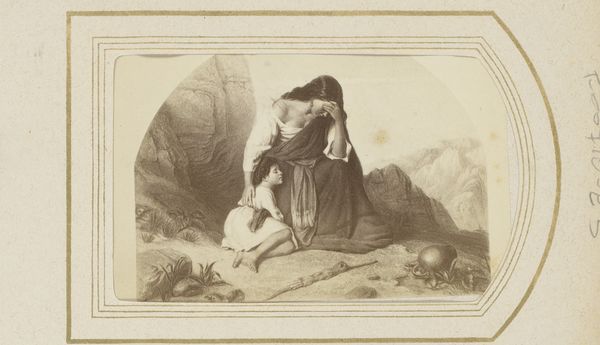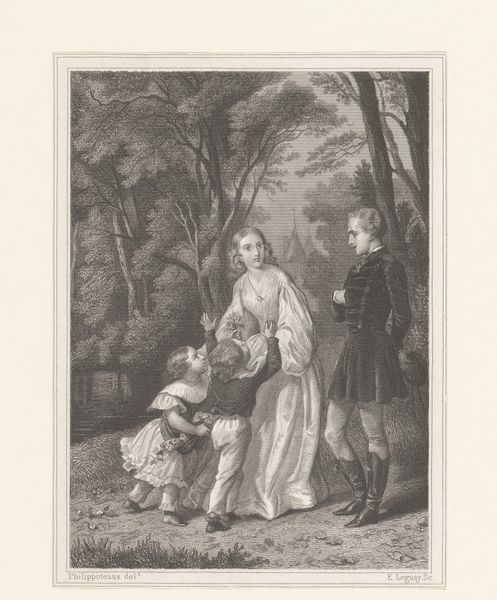
En romersk hyrdedreng ombinder en ung piges sandal. 1851
0:00
0:00
lithograph, print
#
narrative-art
#
lithograph
# print
#
landscape
#
classicism
#
19th century
#
genre-painting
#
history-painting
#
academic-art
#
realism
Dimensions: 408 mm (height) x 291 mm (width) (bladmaal)
Editor: This lithograph, created in 1851 by Adolph Kittendorff, is titled 'A Roman Shepherd Boy Ties a Young Girl’s Sandal.' It feels like a snapshot of everyday life, but something about the clothing and setting makes me think about a specific cultural narrative. What do you see in this piece? Curator: The sandals themselves are quite revealing, aren’t they? Their form and function link us to classical antiquity, a very deliberate gesture during this period. Observe, too, the idealized figures – the shepherd boy, rendered almost heroically, and the young girl with an air of classical modesty. Consider their placement against the backdrop of what appears to be the Roman countryside. Editor: So, it's more than just a genre scene; there are layers of meaning related to history? Curator: Precisely. The artist isn’t simply depicting a shepherd boy tying a sandal. The work invokes a specific memory. This is a return to a kind of golden age, an ideal of pastoral simplicity intertwined with Roman identity. See how the workers in the background reflect this romantic view of work. It invites viewers to reflect on shared ancestry, memory and values. Editor: It's interesting how a simple scene becomes a window into cultural values. I wouldn't have picked up on that myself. Curator: It reveals the power of images and their lasting cultural significance. This piece offers insight into how 19th-century audiences viewed both themselves and their relationship to a romanticised classical past. We might ask ourselves, what symbols are we using today to tell our own story? Editor: Food for thought indeed. Thanks for the enlightening interpretation!
Comments
No comments
Be the first to comment and join the conversation on the ultimate creative platform.

